In the early days of the World Wide Web (introduced to the planet in 1989 by Sir Timothy Berners-Lee) its ability to allow people all over the planet to e-mail each other 24/7 quickly became a characteristic of the communications landscape. And as with all new technologies, “standards” for the use of the Internet, à la email, soon gave way to certain “rules” of use. It became known as “Netiquette.”
Today, the new technological “thing” to do is “to Zoom.” The advent of COVID-19 has greatly accelerated the use of the platform (it was officially released on January 25, 2013). Its stock is now resting somewhere in the range of $250/share. No wonder. It has 200 million users daily.
It also has competitors: Amazon Chime, GoToMeeting, Google Hangouts Meet, BlueJeans, Microsoft Teams, Cisco WebEx, and Signal. But like the “Kleenex” brand, “Zooming” has become the generic term for using the Internet for “electronic gatherings.”
Although not the first electronic technology to allow aural and visual communications among people, with this platform’s explosive growth has come the need for certain standards of use. Why? Zooming is really broadcast and cable television in an organizational and personal context. These above mentioned electronic media have evolved visual and aural “standards” over many decades. People have certain expectations as to how television should look and sound. It makes for more effective communication.
So, below I offer a few tips to the emerging “Zoomiquette” so one can maximize his/her appearance to have the best communication experience possible.
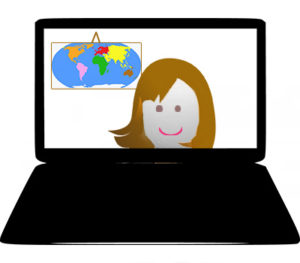 1. Avoid the “guillotined” look. How many times have you observed a participant on a Zoom call whose head is just above the bottom part of the screen looking like they just became another victim of the French Revolution? The guillotined look is not very becoming.
1. Avoid the “guillotined” look. How many times have you observed a participant on a Zoom call whose head is just above the bottom part of the screen looking like they just became another victim of the French Revolution? The guillotined look is not very becoming.
Solution: The video production standard is to divide the screen into three imaginary sections: a top third, a middle third, and a bottom third. A person’s eyes should be on the bottom line that defines the top third of the screen. This way the other participants will see that the head is actually connected to a body, at least the neck and shoulders. You can accomplish this by simply adjusting the angle of the screen of the laptop.
2. Prevent the “heavenly lighting” look. This is a classic error of even people who are in the media production business. The  problem occurs when someone on a Zoom call has a bright light behind them instead of in front of them or even to the side. This is seen often when someone sets up their laptop with day light streaming through a window behind them. The cameras installed in laptops respond to the brightest spot in the picture. With this setup the camera looks at the bright light and says “OK. I’ll adjust everything to that bright light!” The result is the person’s face goes dark. They might look like they have a halo around their head, but no one can see their face.
problem occurs when someone on a Zoom call has a bright light behind them instead of in front of them or even to the side. This is seen often when someone sets up their laptop with day light streaming through a window behind them. The cameras installed in laptops respond to the brightest spot in the picture. With this setup the camera looks at the bright light and says “OK. I’ll adjust everything to that bright light!” The result is the person’s face goes dark. They might look like they have a halo around their head, but no one can see their face.
Solution: Avoid having a window or a bright light behind you. Position the laptop so that the window or bright light is in front of you.
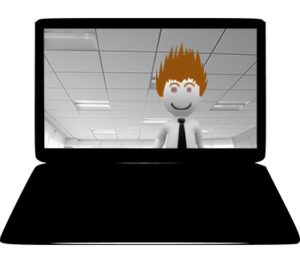 3. “I just love the paint on your ceiling.” Here’s another pitfall. People place their laptop on a table that’s below their own line of sight (in a few instances it’s above their line of sight and everyone gets a shot of someone’s floor). As a result, the laptop camera is looking up at the participant and we also get a glimpse of the person’s ceiling.
3. “I just love the paint on your ceiling.” Here’s another pitfall. People place their laptop on a table that’s below their own line of sight (in a few instances it’s above their line of sight and everyone gets a shot of someone’s floor). As a result, the laptop camera is looking up at the participant and we also get a glimpse of the person’s ceiling.
Solution: Position the laptop screen so that it’s level with your eyes.
4. “If I knew you were coming, I would have straightened up a bit.” The COVID-19 pandemic has forced a lot of people to hunker down at home. Now Zoom has come into the home. In effect, your home has become a television studio, or at least a 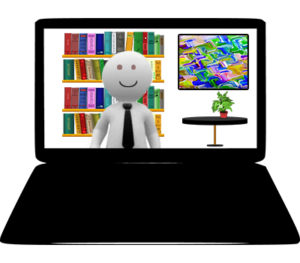 video location. Find a location for your Zoom meetings that present you in a semi-professional setting. I’m sure you’ve noticed that many reporters, experts, and pundits have chosen a place in their home that looks like a library, i.e., there are books in the background.
video location. Find a location for your Zoom meetings that present you in a semi-professional setting. I’m sure you’ve noticed that many reporters, experts, and pundits have chosen a place in their home that looks like a library, i.e., there are books in the background.
Solution: avoid setting up your location against a blank wall. Chose a place where’s there’s something of interest in the background. Often it’s a bookcase or something that reflects who you are. Be aware not to have anything distracting, or too personal, like family photos, or anything offensive in the background.
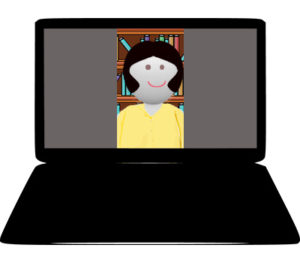 5. “Just say no to vertical video.” A minority of “Zoomers” use their phone to access the Zoom platform, but in-so-doing they position their phone in the same way they use it for other purposes: they hold it vertically. The result is a column visual effect, rather than the horizontal picture characteristic of laptop users. By holding the smartphone vertically the user creates blank bookends on both sides of the vertical picture in the middle.
5. “Just say no to vertical video.” A minority of “Zoomers” use their phone to access the Zoom platform, but in-so-doing they position their phone in the same way they use it for other purposes: they hold it vertically. The result is a column visual effect, rather than the horizontal picture characteristic of laptop users. By holding the smartphone vertically the user creates blank bookends on both sides of the vertical picture in the middle.
Solution: Turn the smartphone 90 degrees to ether the left or the right. Tada! Now you have a horizontal picture with no black on any sides.
6. “Are you experiencing an earthquake?” Often when using the smartphone to Zoom the user holds it in his/her hands or 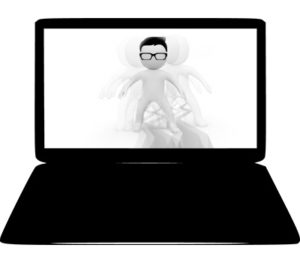 walks around with it causing the picture to be in constant motion. This is very disconcerting for other viewers on the meeting with concentration and focus.
walks around with it causing the picture to be in constant motion. This is very disconcerting for other viewers on the meeting with concentration and focus.
Solution: Before the meeting find a place to sit comfortably. Then find something to prop the phone up against such as a couple of books or take a look at these 10 DIY smartphone stand ideas. If none of these work for you invest in one of the many smartphone stands on the market.
7. “ There’s an echo, echo, echo. . .” Why do some participants sound like they’re in an echo chamber? The location you choose for your Zoom meeting is not only about how you look, it’s also about how you sound. A room that has things on the wall or behind you will allow your voice to sound more round and warm. An empty room will have you sound like you’re in an echo chamber.
There’s an echo, echo, echo. . .” Why do some participants sound like they’re in an echo chamber? The location you choose for your Zoom meeting is not only about how you look, it’s also about how you sound. A room that has things on the wall or behind you will allow your voice to sound more round and warm. An empty room will have you sound like you’re in an echo chamber.
Solution: choose your Zoom location carefully for both how you look and sound. Choose a room that has carpeting and/or substantial items in it to avoid the echo effect. If necessary, add items to the room that you use. Be sure to place them in “off-camera” areas of the room.
8. “Can you hear me now?” We’ve all experienced someone’s audio level getting louder and softer as they speak. Participating in a Zoom meeting doesn’t have the same  aural effect as sitting around a conference table with colleagues in the same room. If you keep leaning back and forth or from side to side, this changes the distance between your voice and the microphone in the top part of your laptop screen.
aural effect as sitting around a conference table with colleagues in the same room. If you keep leaning back and forth or from side to side, this changes the distance between your voice and the microphone in the top part of your laptop screen.
Solution: Keep yourself pretty much in one position near the microphone when you’re talking during a Zoom call.
9.“Do you have to touch your face all the time?” Participating in a Zoom call reverses the usual speaker audience environment. Not only are you looking at the audience looking at you, but you are also looking at yourself. Presuming everyone 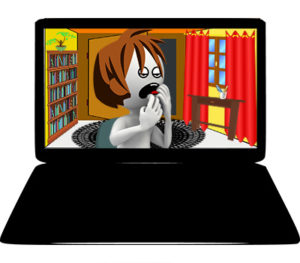 keeps their “video” option on, you’re also looking at how people scratch their nose, fidget, close their eyes, yawn, and do dozens of other non-verbal things people do when not talking (or even when talking). It’s a sociology exercise in observing how people behave non-verbally.
keeps their “video” option on, you’re also looking at how people scratch their nose, fidget, close their eyes, yawn, and do dozens of other non-verbal things people do when not talking (or even when talking). It’s a sociology exercise in observing how people behave non-verbally.
Solution: Be actively aware of your non-verbal behavior and to how others are reacting to what you say.
The reality is this: a Zoom meeting is not merely “the next best thing to being there.” A Zoom meeting is not just a formal (or in some cases an informal meeting) via electronic means. Inherently, a Zoom meeting is a video event and as such should be approached with a sense of “standards” if it is to be a fruitful meeting. Remember, Zoom meetings can be recorded by the meeting host, even a family meeting.
Sure, Zoom has enabled millions of people to communicate with each other all over the world where there is Internet access. Keep in mind, however, perceptions to the contrary, that only about 54% of the people on the planet have Internet access. So, in a very meaningful way, Zoom allows a little more than half of the world’s populace to stay in touch in the age of COVID.
This aside, “Zooming” will continue as an effective communications medium for the foreseeable future. Moreover, the concept is not new. Teleconferencing and tele-commuting has been around for at least 40 years, but now that laptops with built-in cameras and microphones are as ubiquitous as cellphones and smartphones, this new environment creates a demand for proper use. Practice Zoomiquette whenever the opportunity arises and you’ll have a better communications experience.
Eugene Marlow, Ph.D., MBA © 2020


